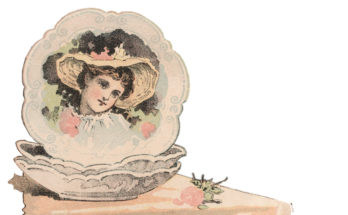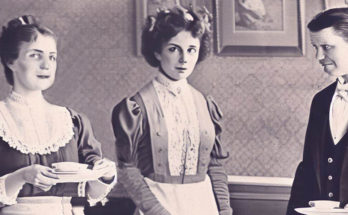In 1884, if there had been a horse and buggy coffee drive-through, a regular cup of coffee would cost the driver 10 cents to sip while they jostled along. Back then, if there was such a thing as lattes, the driver would have left behind 17 cents.
The Table of Average Cost of Material used in Cooking, below, is taken from Mary J. Lincoln’s 1884 textbook, The Boston Cook Book, for the Boston Cooking School, together with today’s equivalent price [in bold] 140 years later.
1 cup of flour or meal $0.01 > $0.32
1 cup of sugar .06 > $1.92
1 cup of butter .20 > $6.41
1 egg .03 > .96
1 cup of molasses .05 > $1.60
1 cup of milk .02 > .64
1 tablespoonful of wine .02 > .64
1 tablespoonful brandy .01 > .32
1 teaspoonful of vanilla .02 > .64
1 teaspoonful of spice .02 > .64
1 teaspoonful of soda, and 2 teaspoonful of cream-tartar .02 > .64
1 tablespoonful of butter .03 > .96
Butter size of an egg .05 > $1.60
1 tablespoonful of olive oil .02 > .64
2 tablespoonfuls of coffee .05 > $1.60
2 teaspoonful of tea .01 > .32
1 quart of milkman’s cream .25 > $8.01
1 quart of Deerfoot cream .60 > $19.24
1 box of gelatine .16 > $5.13
1 lemon .02 > .64
1 orange .03 > .96
1 pound of raisins .18 > $5.77
1 pound of currants .10 > $3.21
1 pound of citron .18 > $5.77
1 pound of crackers .10 > $3.21
1 pound of tapioca .07 > $2.24
1 pound of rice .09 > $2.89
1 pound of macaroni .18 > $5.77
1 pound of spaghetti .16 > $5.13
1 pound of cornstarch .10 > $3.21
1 can of tomatoes .15 > $4.81
1 can of salmon .18 > $5.77
1 can of lobster .15 > $4.81
1 can of devilled ham and tongue .30 > $9.62
1 tumbler of jelly .35 > $11.22
1 jar of marmalade .25 > $8.01
1 pound of tea .75 > $24.04
1 pound of coffee .38 > $12.18
1 pound of chocolate .40 > $12.82
1/4 pound of nutmeg .32 > $10.26
1/4 pound of mace .60 > $19.24
1/4 pound of cloves, cassia .15 > $4.81
1/4 pound of ginger .10 > $3.21
1/4 pound of mustard .12 > $3.85
1/4 pound of herbs, ground .10 > $3.21
Package of whole herbs .08 > $2.56
1 pound of cheese .18 > $5.77
1 pound of Parmesan cheese .50 > $16.03
1 peck of potatoes .25 > $8.01
1 peck of apples .50 > $16.03
1 quart of onions .10 > $3.21
1 carrot .02 > .64
1 turnip .05 > $1.60
1 bunch of celery .20 > $6.41
1 handful of parsley .05 > $1.60
1 bunch of watercress .05 > $1.60
1 head of lettuce .10 > $3.21
The Boston Cook Book, 1884 > 2024 prices.
“These [1884] prices are for the best materials, and are estimated for the season, from October to June, when butter and eggs are higher than during the summer.” — Mary J. Lincoln
Note: In the 1800s and all through the 1900s, people spent more of a percentage of their income for food than today, although I have yet to clarify if the studies treated dining out as an Entertainment Expense rather than a Food Expense, which might give the impression that people are spending less on food today. Even so, from the table it appears as if for many items, food was more expensive.


